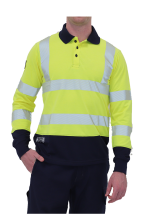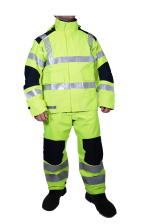What is an Arc Flash?
An ARC flash is a sudden release of electrical energy that occurs when current jumps across a gap between two conductors or from a conductor to a ground. The arc flash generates an intense burst of heat and light that can cause serious injuries, damage to equipment, and fires.
Where does an ARC Flash occur?
ARC flashes can occur in a wide range of electrical systems and equipment, including switchgear, transformers, motors, and other high-voltage components. They can be caused by a variety of factors, including equipment failure, human error, or a short circuit.
Damaged caused by ARC Flashes
The intense heat generated by an ARC flash can cause severe burns, as well as ignite clothing and other materials in the surrounding area, leading to secondary fires. The bright light from the arc flash can also cause temporary or permanent vision damage.
How to prevent an ARC Flash
To prevent ARC flash incidents, it’s important to follow proper electrical safety procedures, including wearing appropriate personal protective equipment (PPE), de-energizing equipment before working on it, and maintaining a safe distance from energized equipment.
Understanding Arc Ratings and Calories
ARC protective clothing is tested and given an arc rating, you know that the arc rating measures the amount of heat the flame resistant fabric blocks when exposed to electric arc. The arc rating can be expressed in either KA or Cal ratings depending on the test method used. The rating given is that of which the garment is expected to “absorb” if exposed to an electric arc. Arc rating is, in essence, the level of protection provided to you, the wearer.
You will be protected from an electric arc if your clothing has a higher ARC rating than the calories of heat generated by the arc.
The Box test method which is common in Europe will be given as Level 1 (APC 1) = 4 Ka or Level 2 (APC 2) = 7 Ka. With the open arc testing (America) while it does not matter if the fabric has an Ebt, ATPV and or ELIM value, it is important to pay attention to the calorie level the fabric can support (as expressed in cal/cm2).










